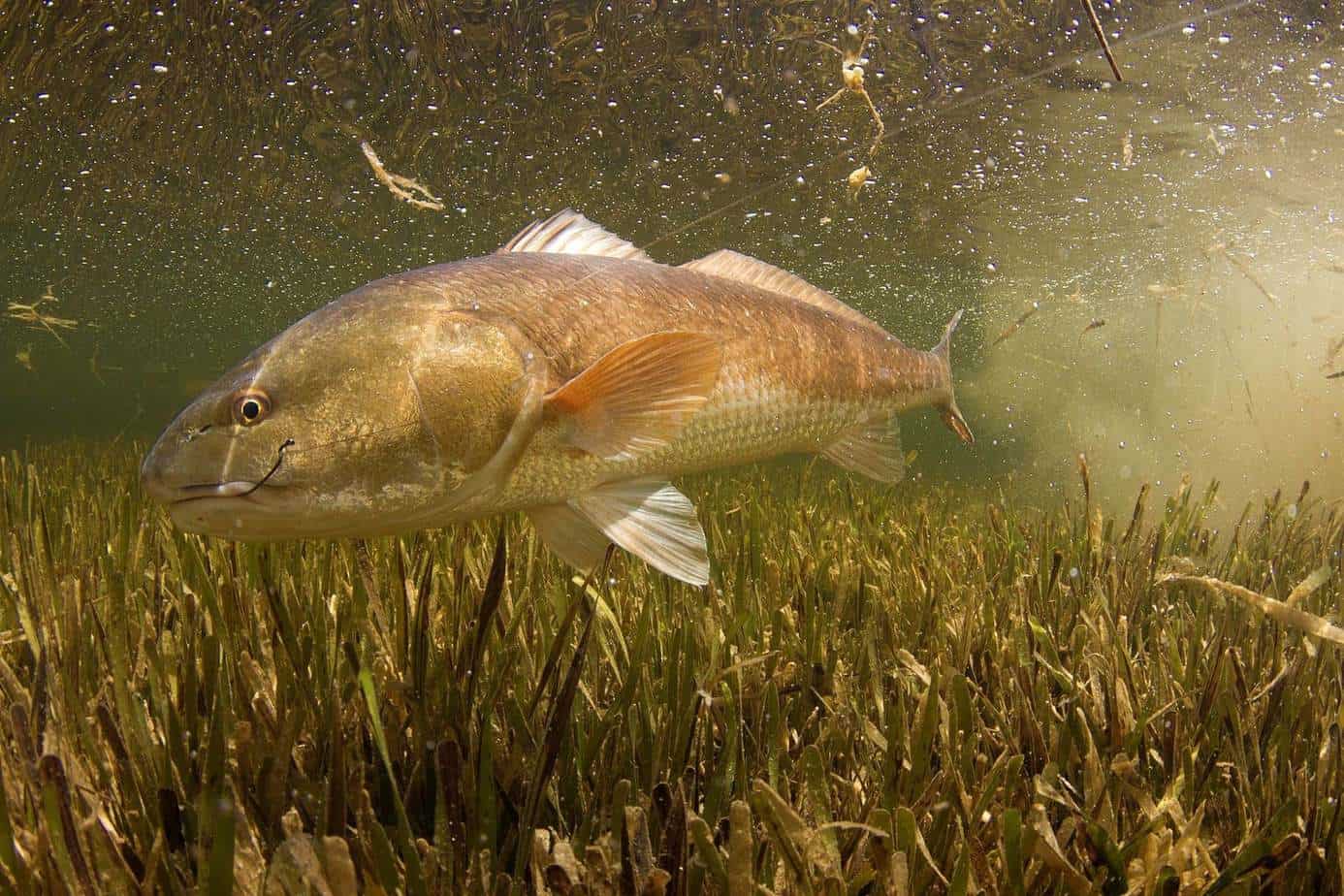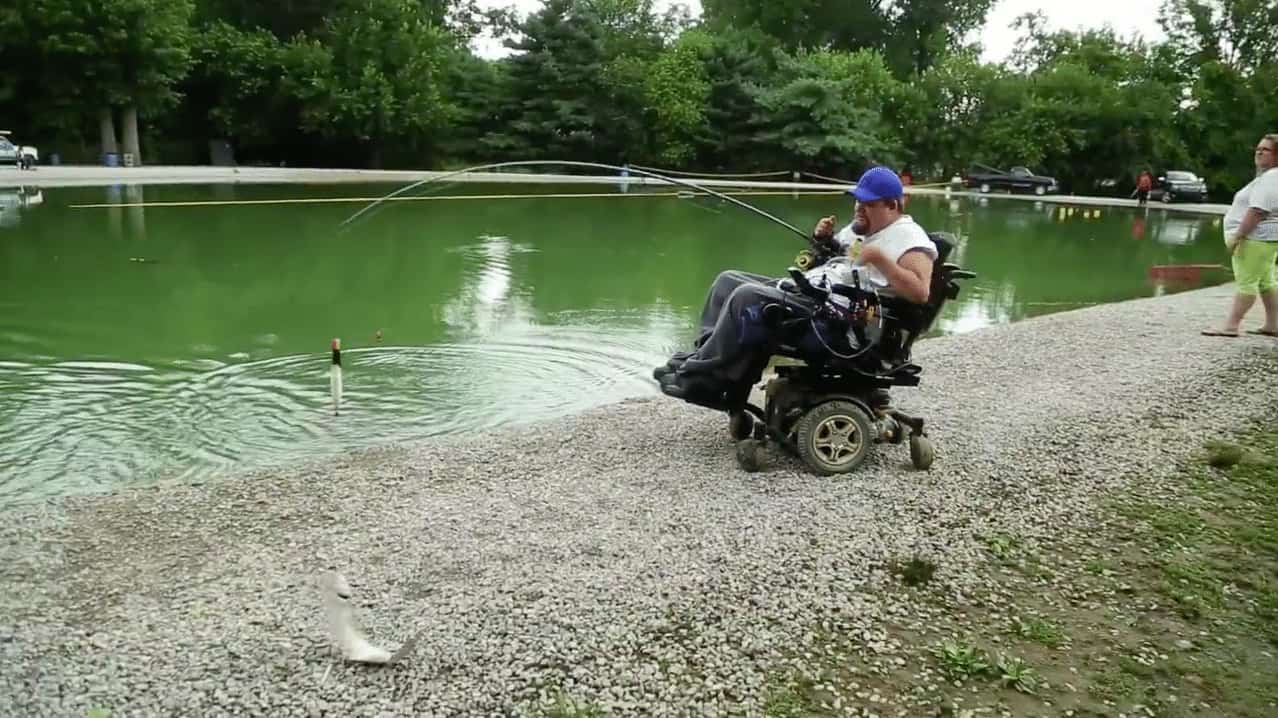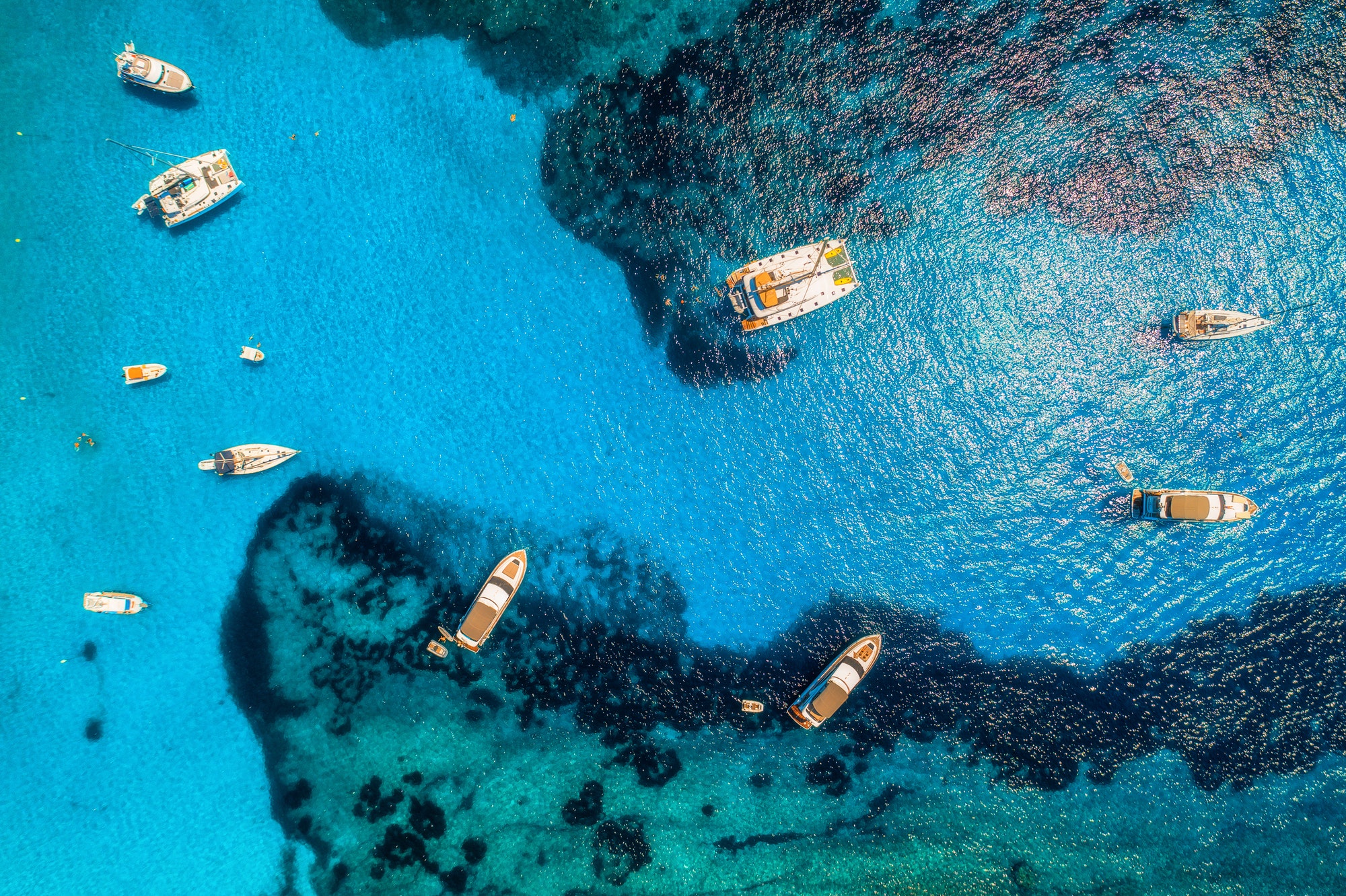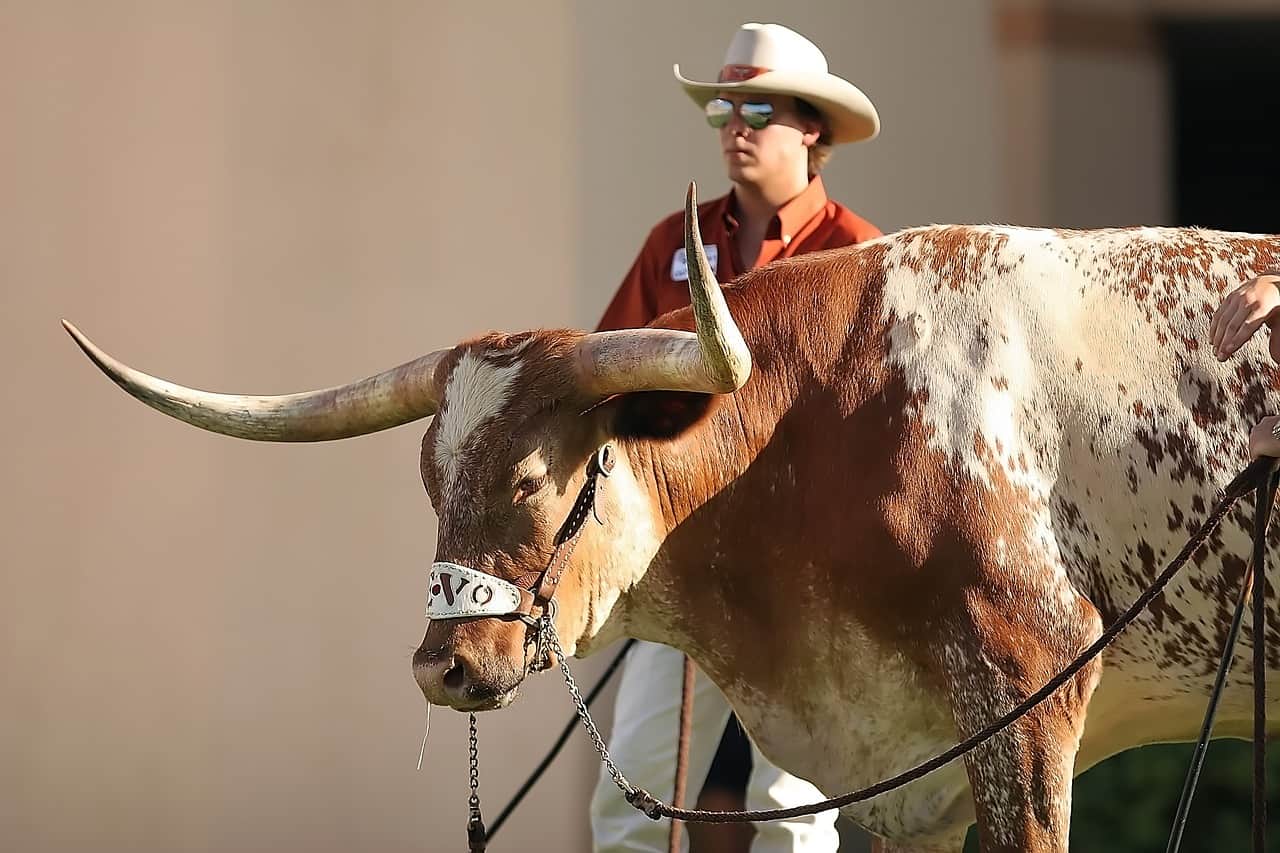
Redfish are an absolutely incredible saltwater catch. They put up one heck of a fight, can be absolutely massive and they happen to be one of the best tasting fish in the sea – unless they’re caught in a pond.
That’s right. This popular Gulf Coast gamefish can be found in freshwater, and they can be huge — 40 pounds huge to be precise.
Redfish (red drum) are a saltwater fish, how in the world are they able to survive in freshwater?
It turns out they’re incredibly adaptable and, if they acclimate slowly to freshwater, can easily survive in a lake, pond or river. They can’t reproduce in freshwater, so that means any redfish caught in freshwater just might be a monster.
They also require the water in the lake to be on the warm side with high concentrations of calcium. Because of their desire for warmer water, they can generally be found easily in lakes or reservoirs that are used to cool power plants.
One state that has found its fair share of reds is Texas. Thanks to multiple reservoirs in the state that match-up to what red drum need to survive (cooling lakes with “hard” water full of calcium) and artificial heating in the winter, reds can survive year after year.
“Reds are taken with a variety of methods,” according to Fish With JD. “Some anglers prefer to still-fish with cutbait. They can also be caught by trollers who fish the deep shoal areas with plugs or spoons – anything that looks like a biatfish. Casting crankbaits also works and that’s how a lot of incidental reds are hooked by bass anglers.”
For more than 30 years, the waters of lakes Braunig and Calaveras have been stocked with millions of redfish by the Texas Parks and Wildlife Department according to Gameandfishmag.com; many of those fingerlings and fry have grown to be sleek, powerful monsters of the freshwater deep.
Although the underwater predators are more commonly sought by fishermen venturing into their saltwater domain along the Texas Gulf Coast, the freshwater stocked redfish action goes on year ’round at Braunig and Calaveras. Anglers fishing both from the shore and from boats bring home their share of reds, and big bulls in the 20-pound range are not uncommon.
Reds can be easily found during morning and evening hours. During these times they often force schools of shad into shallow flats and banks, so if there are shad, it’s likely reds aren’t very far.
Now that reds are surviving in freshwater, what’s the best way to fish them? Texas Parks and Wildlife has the answer:
It’s ironic, but if you want to catch a trophy red drum, or redfish, the best place to do so during most of the year is in fresh water. Red drum live in bays along the coast during the first three years of their lives, then head offshore, where they are inaccessible to anglers most of the time. Only during the fall spawning run do mature redfish congregate in the surf around passes where anglers can catch them. Most red drum caught in Texas bays are two or three years old, and only fish that fall inside the 20- to 28-inch slot may be kept. (Up to two oversized fish may be kept using special tags; see the fishing regulations in the TPWD Outdoor Annual for details.)
In contrast, red drum in fresh water can be fished for year-round and can grow quite large, and there is no maximum size limit on freshwater red drum caught in inland reservoirs. Since the fish can live for years, they can achieve hook-straightening, rod-snapping size.
If a trophy redfish is your goal, freshwater is the way to go. With year-round opportunities to get the perfect fish, there’s nothing holding you back.
The current freshwater state record redfish in Texas is 44 inches long and 36.83 pounds and was caught by Billy Tyrus of Fairfield Lake in 2001. Now that you know the goal, go out there and get your trophy.
Texas Park and Wildife put together a fantastic description on how this process happens.
A Fish out of (Salt) Water
Red drum could well be the “poster fish” for the importance of maintaining freshwater inflows to Texas bays. Freshwater inflows keep estuarine ecosystems alive. The brackish water found in bays is vital to the life cycle not only of red drum, but also of the prey species young reds feed on.
Although red drum spawn in the Gulf of Mexico, tides and currents carry the larvae into bays, where the growing young live for the first two or three years of their lives. There they feed on crabs, shrimp, worms and small fish that live among grasses and oyster reefs. When mature, redfish move into Gulf waters.
“The red drum’s ability to survive in a wide range of water- quality conditions is based on its estuarine existence during the early part of its life cycle,” says Robert Vega, head of TPWD’s marine hatcheries program. “Bony fishes such as red drum must have balanced proportions of water and concentrations of dissolved substances such as sodium and calcium in order to meet the requirements of their living cells. The process of regulating body water and dissolved substances is called osmoregulation. Red drum are very good osmoregulators.”
The ability of red drum to live and grow in fresh water depends largely on the amount of calcium in the water. If calcium levels are too low, the fish’s body chemistry is disrupted, and it becomes unable to regulate the flow of molecules through its cell membranes. The fish loses sodium, potassium and calcium ions (positively charged particles) to the surrounding water and at the same time takes in water. The increased water in the cells leads to even lower concentrations of ions. The low levels of ions eventually cause cardiac spasms and death. In effect, the fish drowns in its own body fluids.
A Hard Drum to Beat
TPWD biologists stock red drum only into reservoirs with high enough water temperatures and a sufficient level of dissolved minerals — “hard” water — for the fish to survive. But it’s not just a matter of dumping fish into a lake and watching them swim off. Research by TPWD fisheries biologist Michael Baird showed that more fingerlings survive when stocked during cool weather and when specific procedures are followed.
The move from salt water to fresh water stresses the fingerlings, and the effect is lessened by a process called tempering. Fingerlings for stocking are hauled in trailers filled with the seawater they were reared in. Tempering slowly replaces salt water with fresh water. When the trailer reaches the lake where fingerlings are to be stocked, its tanks are drained halfway and refilled with fresh water pumped from the lake. The process is repeated four more times at hourly intervals. “At that point salinity has been reduced from perhaps 35 parts per thousand to 1 part per thousand,” Baird says.
In addition, fingerlings are then swimming in water that is the same temperature as the lake. “The more time fingerlings have to get used to the fresh water, the better their survival,” says Baird.
TPWD records show that a few red drum were stocked into some West Texas lakes such as Kemp and Red Bluff as early as the 1950s and 1960s, but stockings were minimal and sporadic until 1981. Since that time Lake Victor Braunig has received more than 4 million fish, Calaveras more than 6 million, Fairfield 4 million plus and Tradinghouse Creek more than 5 million. West Texas lakes such as Colorado City and Nasworthy were also stocked heavily in the 1980s and 1990s but have lost the majority of their red drum fisheries to golden alga kills or low water temperatures.
Braunig, Calaveras, Fairfield and Tradinghouse Creek (Since the original article this power plant has been closed) are likely to be the main red drum fisheries for the foreseeable future. These lakes benefited in 2004 and 2006 from the donation of about 80,000 year-old redfish by Lonestar Aquafarms of Palacios. “These advanced fingerlings really jump-started the fishing, because there appear to be more legal-sized fish now than in the past,” Baird notes.
Freshwater red drum fishing is based on a put-grow-take philosophy. Since the fish can grow but not reproduce in fresh water, there’s no need to protect fish until they reach mature breeding size. The 20-inch minimum length requirement insures anglers will have the opportunity to catch good fish, the three-fish daily limit spreads the harvest over more people, and the unlimited maximum size makes it possible for anglers to harvest a true trophy.
That’s three good reasons freshwater reds are a hard drum to beat.







